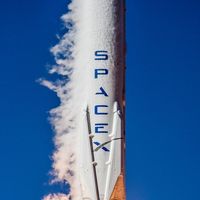NASA's Delicate Dance with Space Debris: A Closer Look at Recent Incidents
July 2, 2024, 3:45 pm

Location: United States, California, San Francisco
Employees: 1001-5000
Founded date: 2011

Location: United States, District of Columbia, Washington
Employees: 5001-10000
Founded date: 2002
Total raised: $7.53B
NASA's ongoing battle with space debris took center stage recently as astronauts aboard the International Space Station (ISS) were directed to seek refuge in the Boeing Starliner spacecraft. The reason? Remnants of a Russian satellite posed a potential threat, prompting a precautionary measure that lasted approximately an hour. Despite the discovery of over 100 tracked debris fragments surrounding the ISS, NASA assured that they did not pose any immediate danger to the station.
The incident was traced back to the demise of the Russian satellite "Resurs-P1," which had exceeded its expected lifespan. Launched in June 2013, the satellite served various purposes, from defense to emergency monitoring and agricultural applications. However, its recent destruction led to the formation of numerous debris fragments, prompting NASA's swift response to ensure the safety of the ISS and its crew.
Collaboration with the US military, specifically the North American Aerospace Defense Command (NORAD), plays a crucial role in monitoring the vast expanse of space surrounding the ISS. With over 45,300 space objects under surveillance, NASA relies on this partnership to detect and track potential threats, such as the recent debris from the Russian satellite.
This incident is not the first of its kind, as a similar situation occurred in 2021 when the Russian Ministry of Defense conducted tests that resulted in the destruction of the defunct "Tselyna-D" satellite. The debris generated from this event prompted the ISS crew to seek shelter in their respective spacecraft, highlighting the ever-present risk posed by orbital debris.
Meanwhile, in a separate incident, NASA confirmed the discovery of SpaceX Crew Dragon debris in the mountains of North Carolina. The remnants, including a sizable fragment comparable to a car hood, were identified as part of the service module of the Crew Dragon spacecraft. Despite expectations of a complete burn-up during re-entry, these fragments survived the process, raising concerns about the effectiveness of current debris management strategies.
NASA's statement regarding the Crew Dragon debris emphasized the need for improved measures to mitigate the risks associated with space debris. While no injuries or damages have been reported from these incidents, the potential threat posed by falling debris remains a pressing issue for space agencies and policymakers.
In a related development, NASA is facing legal challenges over compensation for damage caused by space debris. A notable case involved debris from the ISS battery pack that crashed into a residential home in Florida in March 2021, causing structural damage. This incident underscores the real-world consequences of space exploration and the need for accountability in managing orbital debris.
As NASA continues its mission to explore the cosmos, the delicate dance with space debris serves as a reminder of the complexities and challenges inherent in space exploration. By addressing these issues proactively and collaboratively, space agencies can ensure the safety of astronauts, spacecraft, and terrestrial communities alike.
The incident was traced back to the demise of the Russian satellite "Resurs-P1," which had exceeded its expected lifespan. Launched in June 2013, the satellite served various purposes, from defense to emergency monitoring and agricultural applications. However, its recent destruction led to the formation of numerous debris fragments, prompting NASA's swift response to ensure the safety of the ISS and its crew.
Collaboration with the US military, specifically the North American Aerospace Defense Command (NORAD), plays a crucial role in monitoring the vast expanse of space surrounding the ISS. With over 45,300 space objects under surveillance, NASA relies on this partnership to detect and track potential threats, such as the recent debris from the Russian satellite.
This incident is not the first of its kind, as a similar situation occurred in 2021 when the Russian Ministry of Defense conducted tests that resulted in the destruction of the defunct "Tselyna-D" satellite. The debris generated from this event prompted the ISS crew to seek shelter in their respective spacecraft, highlighting the ever-present risk posed by orbital debris.
Meanwhile, in a separate incident, NASA confirmed the discovery of SpaceX Crew Dragon debris in the mountains of North Carolina. The remnants, including a sizable fragment comparable to a car hood, were identified as part of the service module of the Crew Dragon spacecraft. Despite expectations of a complete burn-up during re-entry, these fragments survived the process, raising concerns about the effectiveness of current debris management strategies.
NASA's statement regarding the Crew Dragon debris emphasized the need for improved measures to mitigate the risks associated with space debris. While no injuries or damages have been reported from these incidents, the potential threat posed by falling debris remains a pressing issue for space agencies and policymakers.
In a related development, NASA is facing legal challenges over compensation for damage caused by space debris. A notable case involved debris from the ISS battery pack that crashed into a residential home in Florida in March 2021, causing structural damage. This incident underscores the real-world consequences of space exploration and the need for accountability in managing orbital debris.
As NASA continues its mission to explore the cosmos, the delicate dance with space debris serves as a reminder of the complexities and challenges inherent in space exploration. By addressing these issues proactively and collaboratively, space agencies can ensure the safety of astronauts, spacecraft, and terrestrial communities alike.
